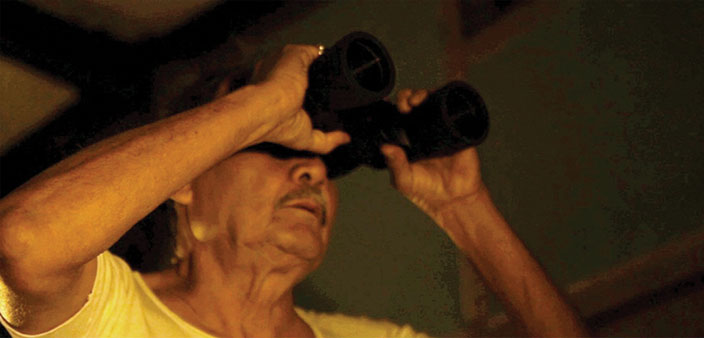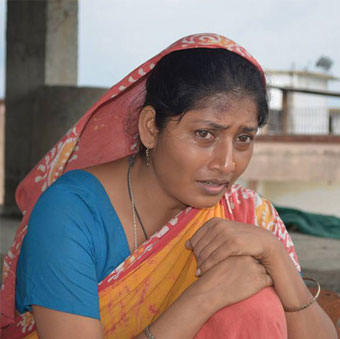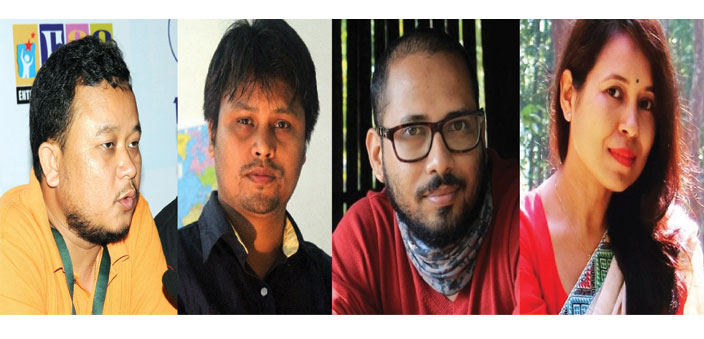Delivering the Aravindan Memorial Lecture at the 21st International Film Festival of Kerala last December, the famous Ethiopian filmmaker Haile Gerima said, “History is made by young people who have always defied formalism and the world needs more of them, as universalism cannot be achieved without fighting the stereotype.” Speaking about the young new generation of filmmakers, Gerima said that alternate independent existence is also possible when no compromise is made with the original ideals to let one’s own voice resonate from within his or her films. The world of cinema is in fact pleasantly replete with creative works by radical newcomers from time to time.

Cinema’s beginning in Northeast, the current trends
Who can forget cinema’s beginning in the Northeast when Jyotiprasad Agarwala made the first Assamese film (Joymoti) in 1935, which was a phenomenal film if analysed in the overall context of contemporary Indian cinemas? And who can forget that, under suffocating conditions of filmmaking, the music maestro and the lone Dada Saheb Phalke Award winner from the region, Dr. Bhupen Hazarika, made a path-breaking debut in 1956? It is interesting to note that as filmmaking on regular basis started in Manipur in the middle of 1970s, when the country made strong strides in the Parallel Cinema Movement, some debut films with distinct aesthetics in Assam made the cut. Next came the new generation of filmmakers such as Gautam Bora, Sanjeev Hazarika and Bidyut Chakravarty, all from Assam, each of whom won the coveted national award for the best first film of a director in the span of just seven years in the 1990s, making all of India acknowledge that filmmaking in the region had come of age. Braving all the increasing adversities, a new breed of filmmakers from the Northeast is still emerging to retain the welcome spirit of their forerunners.
In this backdrop, if someone from Manipur or from Assam carves a success story in national or international film circuit, it automatically causes ripples of no mean interest. Haobam Paban Kumar’s Loktak Lairembee (Lady of the Lake, 2016) became one of the most outstanding Indian films made last year. It has won major awards at leading film festivals in the country, besides being selected for competition and screening at high ranking festivals of Busan and Berlin. In a blend of fable and facts, bringing a common man’s belief in spirit and fear of eviction to poetic justice, the film dwells on the plight of the fishermen community of Loktak Lake in Manipur. The famous floating biomass ‘phumdi’ of the lake has been providing them living space, leisure and livelihood, but as many of their huts are burned down in the name of protecting the ecosystem, the fisherfolks led by their women, fight for their rights.

The film’s protagonist is a penury-driven and depressed Tomba, one of the victims, who is haunted by the fear of the worst. He senses the spirit of evil around when he thinks that an old lady mysteriously wanders in the lake and even knocks at his door in the midnight. One day, he accidentally finds a revolver hidden within the biomass that gives him a sense of power, but soon it becomes a weapon to chase the old lady, whom he mistakes as the ‘evil spirit’ and commits an unintended crime. The movie was shot entirely in and around the Loktak Lake, the camera gliding along as smooth and gentle as the boats on the static water as it captures the daily rhythms of life mismatched by the government’s boat-mounted dredging machine or Tomba’s metal weapon, as the symbols of oppression and violence. At times, silence becomes oppressively meaningful, forming the core of the film’s structure. Depending on very less dialogue, the director, who is an alumnus of the Satyajit Ray Film and Television Institute of Kolkata, allows the unfolding drama to remain self-explanatory. The ending of the storyline keeps the viewer engaged for meaning and significance, and that is where the success of this extraordinary visual poetry lies.
At Mumbai’s Jio MAMI festival, Haobam’s film received the India Gold award for best film while the Jury Grand Prize was won by a film from Assam. It was Jaicheng Jai Dohutia’s debut film Haanduk (The Hidden Corner, 2016), which examines the effects of insurgency and unrest on the lives of innocently naïve people, and how one mother of an untraced extremist cherishes an endless hope that her son will return one day. Though the elderly woman, explicably kept silent for the entire length of the script, performs the funeral of her son after she finds a mutilated and bullet ridden body at her doorstep, yet after receiving intimation that the death of her son cannot be confirmed by the underground outfit he belongs to, she keeps on waiting. She goes to the extent of calling the gods in their community ritual to fulfill her dream of getting her son back.
A diploma holder in editing from Regional Government Film and Television Institute of Guwahati, Jaicheng’s film portrays the mother, Hermoni by name, in total Beckettian longing for the most improbable shrouded in mystery under the given circumstances. ‘Haanduk’ is a word derived from the indigenous Moran language, and its literal meaning is ‘very remote interior place’ or ‘the dark corner of a house’. The meaning is metaphorically carried along by the silent suffering of the mother and her son’s (sarcastically named ‘Mukti’ that means ‘freedom’) childhood friend Sewali who appears more as his fiancée. Another member of the militant group, Biplob (literally means ‘revolution’), who abandoned the path of revolution, symbolises the sarcasm related to their mission and irony of the situation in all its contours. What makes the film authentic in its storytelling is its hardcore treatment stuffed with genuine casting and meaningful colour scheme in rich, cinematic idioms.

A self-taught filmmaker and a passionate hitch-hiker, Deep Chowdhury’s first feature Alifa (2016), which world premiered at the competition section of the Kolkata International Film Festival last year, is a bold study of desire and moral boundaries with characters lifted from a section of daily wage earners. It projects a touching story of people who also exist on the urban fringe and reassures a filmmaker’s faith in the power and purity of storytelling that alternately gives a perfect sub-altern narrative too. The film is set on a hilly forest area overlooking the sprawling city of Guwahati. With a sharp urban-rural divide and mix, Deep’s bilingual (Assamese and Bengali) movie Alifa is quite unsettling to watch for its inherent environmental and communal diatribe. As the storyline goes, it succinctly focuses on everyday nuances of the hard life led by Ali, his wife Fatima (enacted by acclaimed actors Baharul Islam and Jaya Seal) and their two children Alifa and Faisal, inside the dwindling forest in the city outskirt where they are at the mercy of a corrupt forest guard. As a prowling leopard suddenly appears from the shrinking natural surroundings, a bitter human-wildlife feud ensues. However, it is not as agonising as faltering moralities for Ali when he finds out that their already constrained existence is intruded by Fatima’s secret lover at her work place. In addition to regular insults and abuses on city streets, Ali is now confronted with a devastating emotional crisis. With a formulating cinematographic lay-out, a hand-held camera at its best use in hilly and narrow pathways, the screenplay subverts the spectator’s expectations. Alifa’s ultimate confrontation with death and her little brother’s metaphorical journey into wilderness reminded of the fateful allegory in Ray’s Pather Panchali. Encroachment is a metaphor in the film; encroaching nature and habitat on one side, morality and truthfulness on the other, all criss-crossed together, is the leit-motif of this skillful human drama.

Another Assamese filmmaker whose debut film drew undivided attention by securing national and international premieres respectively at MAMI and Tallinn Black Nights (Estonia) last year, is Mumbai-based entertainment professional Rima Das. With a seemingly uncommon premise, her film Antardrishti (Man with the Binoculars, 2016) focuses on a widowed and retired school teacher who discovers new meaning in life after some exhilarating experiences he gathers by looking through a pair of binoculars. By the looking device, a gift from his son, he understands his close family members better, often to his dislike: thus it becomes a metaphor of covert human emotions particularly love and affections of young people. In a way, the binoculars transform to a mute spectator of the beholder’s own surroundings. Although the plot oscillates between members of a joint family, their household providing the confines of emoting, and its immediate periphery laden with rural serenity, it uses patriarchy and womanhood as its backbone to see through the narrative of local culture. The film has another uncommon trait to telling effect and it is silence, best negotiated with spellbinding support from sound designer Amrit Pritam. The intrinsic life styles of the countryside are beautifully captured in this romantic drama of exceptional plot. There are four love stories, one of them going back to the past to examine the protagonist’s mindset; and the way they are mingled into one perspective, is quite noticeable. Kudos to Rima, who apart from self-financing her project, even appeared among the lead casts in it, wrote the script and did the bits to make a dream come true, that sometimes evokes impressions of Iranian neo-realism.
Haobam, Jaicheng, Deep and Rima are producing enlightened filmmaking paradigm. They really want to script their stories of defining “anti-monoculture”, a term used by legendary director Bernardo Bertolucci to describe his film sense. Most of the actors in their films are non-actors, some are amateurs, only a handful of technical crew have prior experiences of filmmaking. They rely heavily on shoe-string budgets that make for a striking principle of a marginal ‘industry’ in a disadvantaged location, where heightened spirits of incredible India rests too.


 [/column]
[/column]